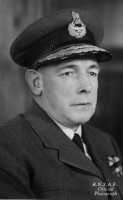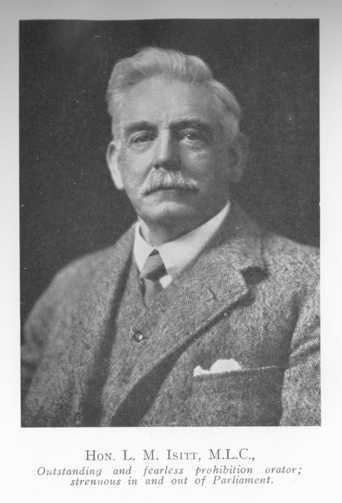Allegiance New Zealand Parents Leonard Isitt Name Leonard Isitt | Signature Rank Air Vice Marshal | |
 | ||
Born 27 July 1891
Christchurch, New Zealand ( 1891-07-27 ) Commands held Royal New Zealand Air Force Battles/wars World War I
World War II Other work Chairman of Tasman Empire Airways Died January 21, 1976, Lower Hutt, New Zealand Education Christchurch Boys' High School Awards Order of the British Empire Service/branch New Zealand Army, Royal New Zealand Air Force | ||
Battles and wars World War I, World War II | ||
Air Vice Marshal Sir Leonard Monk Isitt (27 July 1891 – 21 January 1976) was a New Zealand military aviator and senior air force commander. In 1943 he became the first New Zealander to serve as the Chief of the Air Staff of the Royal New Zealand Air Force, a post he held until 1946. At the close of World War II, Isitt was the New Zealand signatory to the Japanese Instrument of Surrender. After the war he worked as chairman of Tasman Empire Airways.
Contents
- Early and family life
- World War I and air force service
- Inter war years
- World War II
- Post war
- Honours
- References

Early and family life
Leonard Monk Isitt was born on 27 July 1891 in Christchurch, New Zealand, the son of the Methodist minister, member of parliament and prohibitionist Leonard Monk Isitt and Agnes Martha Caverhill. Leonard Monk Isitt junior was educated at Mostyn House, Cheshire, England and Christchurch Boys' High School. He had one brother, Willard Whitmore Isitt (1894–1916), who was a Rifleman in the New Zealand Rifle Brigade in World War I and was killed in France on 31 October 1916.
World War I and air force service
In World War I he served in the New Zealand Army in the New Zealand Rifle Brigade. On 10 May 1917 he was granted a probationary commission in the Royal Flying Corps as a second lieutenant, which was confirmed a month later. In 1918 he was transferred to the Royal Air Force. During his time with the British air services Isitt served as a pilot and flew bombers over French battlefields.
Inter-war years
At the close of World War I, New Zealand had no military air organisation of any sort. On the request of the New Zealand government, the British Air Ministry sent Colonel (later Group Captain) A V Bettington to New Zealand to advise on the establishment of an air service. Bettington brought four aircraft with him and they were based at Sockburn airfield (later to become RNZAF Station Wigram). It was to this embroyonic state of affairs that Isitt was to return. In 1919 Isitt, then a captain, was posted back to New Zealand where he was sent to Sockburn airfield to take care of the four aircraft and serve as commanding officer. Additionally Isitt served as the liaison officer to the Canterbury Aviation Company on behalf of the government.
Between the wars one of Isitt's responsibilities was pilot flight training and he served in the Air Ministry, the New Zealand Permanent Air Force (NZPAF) and the RNZAF. In 1937, the RNZAF was made independent of the New Zealand Army and at that time Isitt was promoted to wing commander and appointed as the Air Member for Personnel. In the pre-World War II build up this was a key post and Isitt was soon promoted again to group captain.
World War II
Continuing as Air Member for Personnel at the start of World War II, in March 1940 Isitt went to Canada as he had been appointed as New Zealand's representative on the board of Empire Air Training Scheme, a massive aviation training programme. In May 1942 Isitt was sent to London to establish the RNZAF's Overseas Headquarters, receiving a promotion to air commodore at the same time. Having accomplished his task, under a year later Isitt was back in New Zealand and in March 1943 Isitt became the New Zealand's Deputy Chief of Air Staff working under the then Chief of the Air Staff, Air Commodore Victor Goddard, a British officer on secondment. Around four months later on 19 July 1943 Isitt was appointed Chief of Air Staff of the Royal New Zealand Air Force in the rank of air vice-marshal. He was the first New Zealander to hold his Service's senior appointment and the first to hold one of the air marshal ranks. In addition to securing a significant role for his Air Force in the South Pacific, Isitt represented New Zealand at conferences in London, Washington and Ottawa during World War II. He was the New Zealand signatory to the Japanese Instrument of Surrender marking the formal surrender of Japanese forces, so ending World War II.
Post war
Isitt retired in 1946 as Chief of the Air Staff and he became chairman of Tasman Empire Airways (TEAL) in 1947. He continued as TEAL chairman until 1963 when he was succeeded by Sir Andrew McKee.
Honours
In 1935, he was awarded the King George V Silver Jubilee Medal. He was appointed a Commander of the Order of the British Empire in 1940 and a Knight Commander of the Order of the British Empire in the 1946 New Year Honours. His medals are held at the Air Force Museum of New Zealand.
